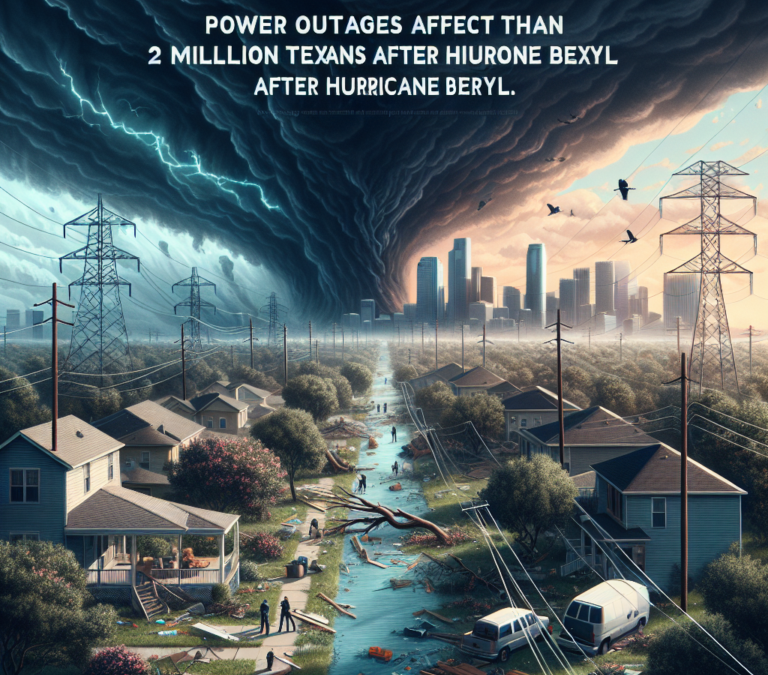Houston, Texas – More than 2 million people continue to grapple with power outages following the destructive path of Hurricane Beryl through Texas and Louisiana. The storm left at least eight people dead, including a civilian employee of the Houston Police Department tragically killed while attempting to navigate flood conditions on the way to work.
The aftermath of Hurricane Beryl has been devastating, with multiple fatalities attributed to fallen trees and widespread property damage. Houston, specifically, is facing a long road to recovery after the powerful storm’s core passed alarmingly close to downtown, bringing wind gusts exceeding 80 mph and leaving a trail of destruction in its wake.
Currently, 2 million customers in Texas remain without power, bearing the brunt of scorching heat as the region grapples with sweltering temperatures soaring into the triple digits. The National Weather Service has issued a heat advisory, highlighting the urgent need for adequate cooling solutions as communities work to rebuild in the sweltering aftermath of the storm.
Efforts are underway to restore power to affected areas, with CenterPoint Energy aiming to have power back for 1 million customers by the end of Wednesday. Meanwhile, the city of Houston is also contending with significant rainfall, with Buffalo Bayou reaching water levels that rival the devastating aftermath of Hurricane Harvey in 2017.
In response to the widespread devastation, Texas Lt. Gov. Dan Patrick has requested a federal emergency disaster declaration through FEMA, a request that has been approved by President Joe Biden. The federal government has already extended aid in the form of generators to assist those without power, emphasizing the critical need for support in the face of the ongoing crisis.
As the remnants of Hurricane Beryl move northeast, areas across the Midwest and Northeast are bracing for heavy rain, potential flooding, and severe weather conditions. In Arkansas, Missouri, Kentucky, Illinois, Indiana, and Michigan, flood watches are in effect, with the looming threat of wind gusts, large hail, and tornadoes adding to the region’s challenges.
Looking ahead, Wednesday will see Beryl’s remnants sweeping through the interior Northeast, bringing the potential for up to 4 inches of rain across upstate New York and northern New England. The impact of the storm continues to reverberate across multiple states, underscoring the urgent need for ongoing support and resources as communities work to recover and rebuild in the wake of this devastating natural disaster.









